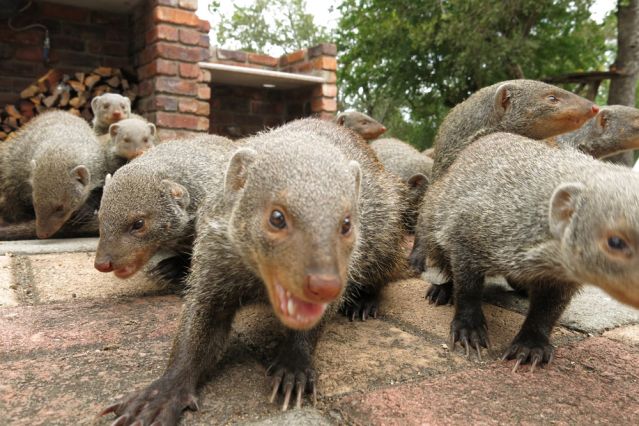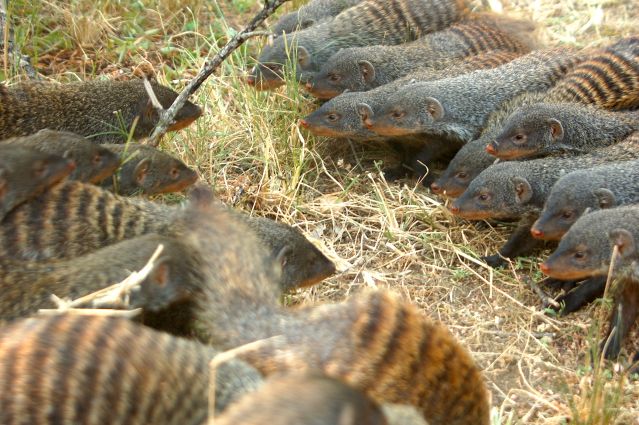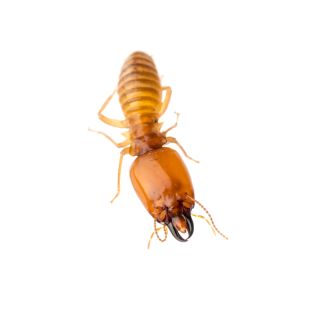Animal Behavior
What Humans Can Learn From Animal Warfare
Studies of mongooses and termites may shed light on the evolution of war.
Posted April 22, 2024 Reviewed by Devon Frye
Key points
- How and why groups of animals from the same species fight one another is poorly understood.
- Researchers will study inter-group conflict in two model species, banded mongooses and termites.
- The results may help explain the evolution of inter-group violence in different species—including humans.

Michael Cant, an evolutionary biologist at the University of Exeter, has long been fascinated by the balance between cooperation and conflict required of animals that live in social groups. Now, he and his team have been awarded a grant by the European Research Council to study the role of conflict in the evolution of animal societies.
By focusing on model species like mongooses and termites, the researchers hope to better understand the development and consequences of inter-group aggression, as well as the conditions that promote peace. The findings may shed light on the evolution of human societies, too.
Cant says that there is a solid theoretical framework for understanding the factors that promote cooperation in groups, such as kinship and reciprocity. But the flip side of that—violent, inter-group aggression—is also a prominent feature of many species, humans included, and it is much less understood.
One reason for this gap in knowledge is the difficulty associated with studying conflict compared to cooperation. Cant says that cooperative behavior is often predictable in time and space (think bees working together at a hive or birds helping to feed their offspring). Inter-group conflicts, on the other hand, tend to occur unpredictably and involve large numbers of individuals.
“It is chaotic and fast-moving and hard to see what’s going on,” says Cant. “I think that’s why we haven’t developed a solid theoretical understanding of the causes of inter-group violence.”
War in the Wild
For the fieldwork portion of the project, Cant and colleagues will study a population of wild-banded mongooses in Uganda. “They are kind of a rougher, tougher version of a meerkat,” says Cant.

Banded mongoose groups show high levels of cooperation; for instance, the females synchronize when they give birth and raise all the offspring communally. But they also frequently get into violent battles with other mongoose groups.
“There are several factors that might be driving mongoose groups to seek out battles rather than avoid them,” says Cant, who has studied the animals for nearly 30 years.
One reason for warfare may be to increase genetic diversity. Banded mongoose groups are made up of mostly related individuals, which can lead to inbreeding. There is some evidence that female mongooses often instigate fights between groups. Then, in the chaos of battle, they sneak away to mate with unrelated males from the rival group. Cant says that DNA profiling has revealed that about 20 percent of offspring are fathered by males from other groups.
Another explanation stems from observations that mongoose pups are particularly vulnerable during inter-group battles. Cant and colleagues hypothesize that mongooses may seek out conflicts with groups with young pups and try to kill them as a way of removing future competitors.
The research team will use drones and other tracking technologies to monitor when inter-group fights are about to happen and study different individuals’ roles in the conflict.
“Using these drones will open up a completely new perspective on these battles,” says Cant. “With the drones and other technologies, we might get to the bottom of what’s happening in the heat of battle.”
From Conflict to Coexistence
In addition to the mongooses, Cant and colleagues will study a laboratory population of dampwood termites. Compared to fieldwork in the African savannah with charismatic mammals, lab studies of termites might not sound so interesting. But Cant is eager to understand the insects’ social behavior, too.

Termites found their nests in rotting logs. As the group grows and expands, they consume the wood but also start to bump into other termite groups using the same log. This can lead to lethal wars between termite colonies in which groups are completely wiped out. But it doesn’t have to.
“The interesting thing about these termites is that they show the full spectrum of inter-group relationships, from killing all the way through to tolerance and then fusion,” says Cant. “Some groups, instead of fighting each other to the death, will fuse together into one functional colony, and those fused groups are hypothesized to be better able to move through the log and exterminate all the other competitors.”
The researchers will study these different model organisms, trying to establish common principles between their behaviors and develop testable theories about conflict.
“If you find that the same theory can explain patterns of behavior in such radically different organisms, then it’s a good indication that you've got a general understanding of the principles that are driving these conflicts,” Cant says.
Implications for Human Evolution
Cant and colleagues hope that this study will not only help explain why warfare between rival groups evolves in some species but not others, or between some groups within a species and not others, but also have implications for our understanding of human evolution.
“If we can understand the ecological, social, and genetic factors that drive conflict in animals that are not so cognitively complex, we may uncover something important about the ways families evolve,” says Cant.
Cant is cautious in extrapolating findings from mongooses and termites to humans; he cites anthropological research showing that patterns of inter-group violence in human societies may be driven by uniquely human factors, such as revenge, feuds, and reputation. But he also says factors like competition for territory, resources, and mates may be more generally applicable drivers of conflict across species.
“You have to be careful when extrapolating explanations for human violence and warfare from animal studies,” he says. “But I think that studying the general factors at play across other species can only help us better understand patterns of violence in human societies.”




